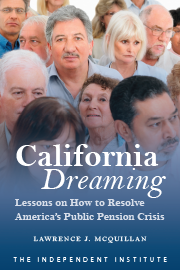Economists have long understood that America’s tort system acts as a serious drag on our nation’s economy. Although many excellent studies have been conducted, no single work has fully captured the true total costs, both static and dynamic, of excessive litigation.
The good news: We now have some reliable figures. The bad news: The costs are far higher than anyone imagined.
Based on our estimates, and applying the best available scholarly research, we believe America’s tort system imposes a total cost on the U.S. economy of $865 billion per year. This constitutes an annual “tort tax” of $9,827 on a family of four. It is equivalent to the total annual output of all six New England states, or the yearly sales of the entire U.S. restaurant industry.
How does the legal system extract such an astounding amount from our economy? We applied the rent-seeking theory of transfers from economic science to pick up where past studies—including the highly regarded Tillinghast-Towers Perrin study—leave off. We began by examining the static costs of litigation—including annual damage awards, plaintiff attorneys’ fees, defense costs, administrative costs and deadweight costs from torts such as product liability cases, medical malpractice litigation and class action lawsuits. The annual static costs, $328 billion per year, are well in excess of previous Tillinghast estimates.
But $328 billion is only the beginning. After all, litigation doesn’t just transfer wealth, it also changes behavior, and often in economically unproductive ways. Any true estimate of the costs of America’s tort system must also include these dynamic costs of litigation—the impact on research and development spending, the costs of defensive medicine and the related rise in health-care spending and reduced access to health care, and the loss of output from deaths due to excess liability.
Consider the impact of medical liability concerns on the health-care sector. It is a well documented fact that the fear of litigation prompts doctors to engage in expensive defensive medicine. PricewaterhouseCoopers calculates that medical liability concerns increase annual health care spending by $124 billion in 2006 dollars, which must be added to any comprehensive estimate of litigation costs.
At the margin, higher health-care costs also reduce access to care for patients. We estimate that the additional $124 billion in liability-based health care costs adds 3.4 million Americans to the rolls of the uninsured. Uninsured people are more likely to suffer from a number of diseases and serious or even fatal conditions. Economically, the result is that more Americans are absent from the workforce and their productivity declines—a total loss of output we estimate to be $39 billion per year.
Excessive liability also hampers innovation. Ideally, product liability should induce companies to invest in safety-related improvements to products. But the ideal is not always the reality. As liability costs increase, companies respond by shifting funds from research and development into fighting litigation and withholding or withdrawing products from the market. Less R&D spending means fewer new products and less innovation.
Research by W. Kip Viscusi and Michael J. Moore suggests that 13 U.S. industries have tort costs that exceed this tipping point. Overall, we found that foregone R&D due to excessive liability results in lost sales of new products every year of over $367 billion.
An overly expensive liability system also increases the cost of many risk-reducing products and services, at the expense of human lives. A previous study we examined determined that the adoption of tort reforms over the past couple of decades has prevented more than 20,000 deaths. Our analysis goes further to estimate the human cost of a failure to enact reforms.
Based on data from previous studies, we determined that more than 77,000 people would have been alive today and contributing to the workforce, but are not because of a failure to enact comprehensive tort reforms in the states. The cost of foregone output from these lost workers is more than $7 billion each year.
What we’re left with, then, are annual dynamic costs of $537 billion resulting from our litigation system. Add that to the static costs of $328 billion and you arrive at the total of over $865 billion per year.
In this study we do not venture to propose a specific litigation-reform agenda. But we do provide all who are concerned with this issue some hard numbers to work with. And if you’re wondering who the victims are of a tort system out of control, the answer today: almost everyone.










